[In -depth popular science] After experiencing a journey of space, where to go
Author:China Science and Technology M Time:2022.06.21
In daily life, people's always joked that "planting vegetables" is the habit of engraving in Chinese genes. Although it is a drama, we have thousands of years of farming history and culture, and we do have a sense of "farming" that are difficult to give up. The year of the Chinese people spent in spring planting and autumn harvests, summer and winter hid. The interweaving of the four seasons is related to the growth of crops. Therefore, we also have more expectations for seeds. start. On the way to pursue good seeds, there are many attempts, improvement of seed selection, introduction of good varieties, and breeding new species ... with the vigorous development of my country's aerospace industry, the manned spacecraft frequently returns from space, and aerospace technology has also found "good Seed "provides opportunities.
What kind of seeds can be sent to the sky?
Each seed with a "space boat ticket" is not simple. First of all, it is necessary to confirm the legality, feasibility, and efficiency of the seeds, and then the quality of the seeds itself. It's preferred. Someone describes the process of seeds to space as a "superior student" advancement. This metaphor is appropriate. The seeds selected by heaven are selected from their own quality and overall characteristics. Each capsule is carefully selected and passed through the ground test, inspection (test), packaging, loading, transmission and recycling, opening of the cabin through the samples. Wait for a series of work. On May 19, 2022, the China Manned Aerospace Engineering Office announced the list of Shenzhou 12 and Shenzhou 13 manned spacecraft aerospace breeding experiment projects. Gender materials have been opportunities to fly.

The seeds that have been notarized after the aerospace are carried out
According to statistics, the number and category of the seeds of space traveling in my country are extremely rich. Grain crop seeds such as rice, corn, wheat, and Chinese herbal medicine seeds such as red scenery, Dendrobium candidum, Wuxi, windproof, licorice, safflower, etc. Leaf and other pasture seeds, eggplant, pumpkin, pepper, cowpea, cabbage and other vegetable seeds, skewers red, red lotus, cattle and other flower seeds, red beans and other trees seeds. They have been equipped with various aerospaces. In addition to common varieties, the main specialty and scarce species in different places will also be "heaven". Shenzhou 12 has been equipped with Chinese herbal seeds, such as Dendrobium, and even microorganisms such as cellar mud and wine.
Seed space journey
People are worried about sending seeds to the sky, why is it? What is the purpose of frequent aerospace breeding reports from various news reports? In the final analysis, it is to rely on a special space environment to achieve the seed "gene mutation". In fact, this vision is not exclusive to aerospace breeding. It has appeared as early as when human farming. In the early days of human beings, the natural mutations of some genes caused excellent plants with excellent performance. The advantages such as high yield and high survival rate they showed made people ecstatic and began to cultivate these "outstanding players". It was just that people did not know the reason why these seeds suddenly changed. Now, with the development of science and technology, the secrets that affect the variation of seed -oriented mutations are revealed, and the internal DNA sequence and structure are root causes. At the same time, people have also mastered a variety of improved seeds to create various extreme environments through technical means, such as laser irradiation, ionization radiation, soaking chemicals, etc., and can take the initiative to promote seed gene mutations and obtain a large number of trait mutations. Seeds, and then screen the better seeds. However, these methods need to take a long time, and the scientific researchers who participate in it will also face long -term boring observations and records. Under the coordinated factors such as high -energy particles radiation, microcuspiciousness, and vacuum in the space environment, the DNA of plant seeds is dual -linked, which will be broken and sorted. By penetrating, the variation rate of space variants and breeding is higher.
Therefore, people turn their eyes to space, send seeds to space, and change their environment. In space, there is a rich cosmic ray, which may cause damage to the human body. Human beings need to wear a space suit to protect themselves. The "new environment" that cannot be simulated. Sending space is just a link that induce seeds to perform genetic mutations, so that the seeds can go to this kind of uncertain environment to go around, so that the internal DNA sequence or structure will mutate. After the seeds go to heaven, you need to rely on computer control or astronaut operation to monitor the survival of the seeds at any time. In addition, the angle of the spacecraft, the location of the earth, etc., in order to ensure that in a limited time, the seeds can intersect with the cosmic rays as much as possible and be bombarded by stronger rays.
Sending "seeds to space" is to carry plant seeds or branch buds on the return spacecraft, and use the space micro -weight to increase ions, various cosmic rays, large -scale magnetic fields, and short -term overload to make the seed gene change.
Yang Kai, chief engineer of Beijing Changjian Technology Co., Ltd. and former chief engineer of the China Aerospace Breeding Research Center, said: "Aerospace breeding is a combination of aerospace technology, biotechnology and agricultural genetic breeding. The high -tech of other disciplines is the extension of traditional mutagenic breeding methods in the field of aerospace. For more than 30 years, the scientific research of aerospace breeding has fully verified the characteristics of high frequency of aerospace breeding, stable variation, and beneficial mutant and geneticity. Space mutation has many advantages. The most important of which is to greatly improve the mutation frequency of materials and can create a rare beneficial gene mutation that is difficult to obtain in a short period of time. New species and new materials can be widely used in a variety of breeding practices such as choosing breeding, hybrid breeding and molecular breeding. It can shorten the breeding cycle and cultivate breakthrough excellent varieties in a short time. " What changes will the seeds change?
In most cases, spacecraft have the primary flight tasks, and aerospace breeding requires "ride". When the seeds enter space, the temperature inside the spacecraft is usually maintained between 50 degrees Celsius to minus 15 degrees Celsius, and the average temperature can be maintained at 25 degrees Celsius. This is a safe temperature range for seeds. Under the shelter of the spacecraft, the seeds can complete space travel safely without providing additional survival protection.
So what changes will these seeds happen? Will the watermelon from watermelon seeds sweeter? Will rice be higher? Will tomatoes be larger? The answer is not yes. Scientists have found that the germination rate, crop yield, disease resistance, insect resistance, nutrient content, and the color of plant flowers, and the height of the height of the plant flowers have changed. However, there is no regular change. Most of them are random, and aerospace breeding does not cause mutations in each seed. According to statistics, mutations that are beneficial to humans only account for about 3 ‰.
Specifically, in terms of seed germination rate, after the seeds of wheat, corn, cotton, sunflowers, soybeans, cucumbers and tomatoes are radiated by space, their seed vitality and germination rate have improved; The germination rate of plant seeds such as green peppers and tobacco is not significantly different compared with the seeds that have not been placed in space. In addition, the seeds of sorghum, watermelon, eggplant, and radish will even decrease after space experience. The germination rate will even be reduced. The germination of sorghum seeds and seedlings are strongly suppressed, and the birth period is delayed.
This also shows that not all plants are suitable for aerospace breeding, and aerospace breeding is not universal. However, it is surprising that my country has obtained a series of new varieties of rice, wheat, cotton, green peppers, and sesame, and has obtained a series of new varieties, of which more than 200 new varieties have passed national or provincial approval. At present, there are aerospace breeding vegetable sales markets in Shandong, Hebei, Jiangsu and other places. Aerospace breeding vegetables are more expensive than ordinary vegetables. However, aerospace breeding vegetables have good taste and rich nutrition. After comparison of relevant national institutions, aerospace breeding vegetables are about 30%higher than ordinary vegetables.
Aerospace breeding advantage
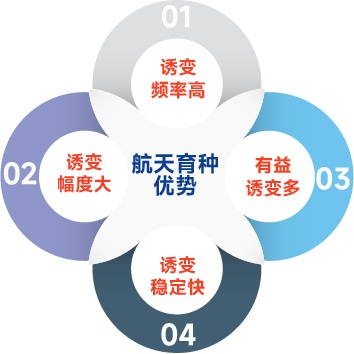
So experts explain this mutation: "Aerospace mutation is somewhat similar to the" blind box '. In the process of mutagne, which part of the seed's genetic material will change, when, and what will be, what will become, among them, among them, among them, this is of which. There are great randomness and uncontrollability. Before practical cultivation, no one knows how the seeds exist. On the whole, the variations that may occur in the seeds in the space environment are large, there are many mutant sites, and the mutation is stable. More sex. "
When the seed returns to the ground
Some people think that the seeds can be done once and for all, and after planting, they can "lie flat" and wait for the harvest. This idea is too subjective, because the seeds of the sky have become better and bad. The mutagenic is random, and the traits are good or bad. This is why the seeds have to experience rigorous ground selection after landing. This is a very critical step during breeding. The selection of ground selection needs to be selected for multi -generation screening, excellent selection, and excellent selection. It takes a short time for three or five years, and it is more than ten years. Only certified. Therefore, it takes several years of cultivation for targeted screening.
Taking the breeding of wheat as an example, the following 4 steps are required:
(1) Observe a generation of seeds. The seeds of the sky are a generation of seeds, planting a generation of seeds, and scientific researchers do not grow up, only record some of their mutant traits.
(2) Preferably second -generation plants. Continue to sow the seeds of the first -generation plants, cultivate the second -generation plants, and continue to observe the second -generation plants. As the mutation rate of the second -generation plants increases, the mutation is more obvious, and the targeted selection according to breeding needs. If you want to obtain wheat with the characteristics of anti -inverted characteristics, the plants that become short; if you want to increase wheat output, you will screen the large plants that become larger; if you want to harvest multiple times a year, you will screen the precocious plants.
(3) Determine plant stability. The seeds screened on it will continue to sow to allow them to make their own breeding. After breeding for 3-4 generations, observe whether the traits of these mutations can be stable and inherited.
(4) Group comparison with different places. For group comparative tests with seeds with genetic stability and test species tests in different geographical locations, thereby determining whether it can stably show excellent variation traits in different environments.
"Space No. 4" wheat of aerospace breeding
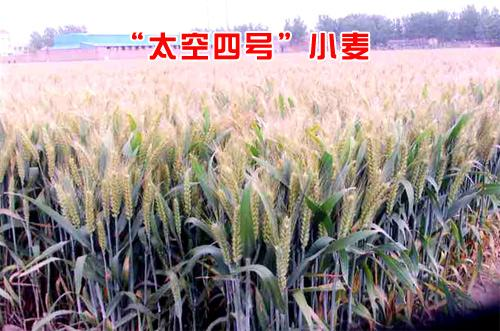
Therefore, the seeds that have been put on space every time are not "turning" in space, and it can be planted in the ground. The cultivation of good space varieties is a fine process. After space treatment, ordinary seeds need to be selected and tried on the ground. After several generations of breeding and elimination, good properties can be stabilized. New varieties of high -quality crops. The taste of many vegetables traveling through space is better than that of vegetables cultivated in ordinary ways. The taste of "space carrot" is refreshing; "space purple potato" and fruit -like flavor; "space potato" skin is black, inside is purple, rich in anthocyanins, and has the effect of beauty and health care. In summary, the selected space varieties are characterized by many beneficial variations, large variables, good stability, high yield, high -quality, early maturity, and strong disease resistance. Is aerospace breeding safe?
On the one hand, people want to see the seeds that are sent to space to produce a qualitative leap, but at the same time, some people will have safe concerns about the new seeds cultivated by aerospace breeding. Ordinary green peppers, tomatoes, and cucumbers on the ground will turn to heaven. As soon as he came back, he changed his appearance, and many people worried about their food safety.
Wang Tao, deputy chief engineer of Beijing Changjian Technology Co., Ltd. and the former engineer of the China Aerospace Breeding Research Center, said: "First of all, aerospace breeding is not the first in my country. As early as the early 1960s, the former Soviet Union and the United States had carried out plant seeds. Equipped with the relevant experimental research on Satellite God, and used this technology to solve the self -sufficient problem of the food staff in the space station. Secondly, in the 1980s, the World Health Organization, World Atomic Energy Agency, and World Food and Agriculture Organization jointly identified aerospace breeding products. safe."
Scientists have also tested and analyzed for this. The rice that has been breeding after aerospace is still rice. Green peppers are still green peppers. There is no exogenous gene intervention. There is no essential change in species. This is for example, the gene arrangement of DNA is "1, 2, 3, 4", and the gene arrangement after aerospace breeding is "1, 3, 4, 2", but the sorting changes.
Aerospace breeding process schematic diagram
Luo Bin, chairman of Beijing Changjian Technology Co., Ltd. and former director of the Division of the Group of the China Aerospace Breeding Research Center, introduced: "Since there is life on the earth, biodiversity has continued to evolve and produces many species, so as to achieve what we see. The fundamental reason for the complex world that leads to these huge changes is that the organisms are exposed to ionizing radiation from the universe, the sun, and even the earth itself. These radiations have caused mutations in the organisms. In a few cases, the beneficial mutant has become a new variety, which makes them survive and grow in a vast natural environment. For thousands of years, humans have selected and cultivated those best natural varieties and benefited from it. Now We don't need to wait for the gift of nature anymore. As early as the 1920s, scientific researchers have found that through artificial ionization radiation, it can induce beneficial mutations. Crop breeding can increase the frequency of natural mutations. In the era of breeding 1.0, and now with the development of aerospace technology, the era of artificial radiation and mutaged breeding 2.0 has arrived. "
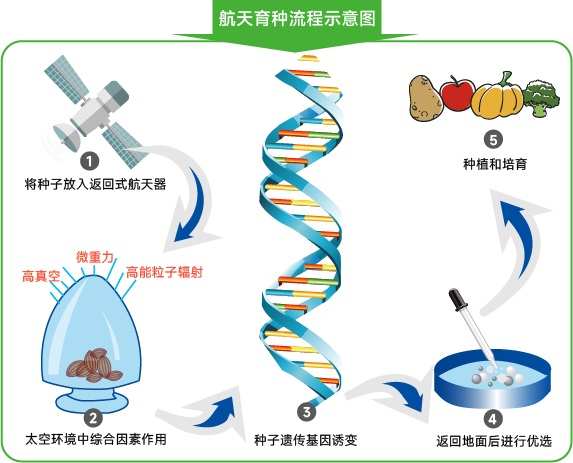
From the perspective of aerospace breeding, this variation is essentially the same as the natural mutation of natural plants. It is only a special environment in space that accelerates the natural variation that it takes hundreds of years or even thousands of years to produce. In other words, this cultivation method has not changed the exogenous gene into the genome of the crop. Although as a mutagenic breeding technology, aerospace breeding will cause the crop's own chromosomal to produce a lack of structural variation such as the chromosomes of the crop itself. In addition, my country's relevant regulations on genetically modified safety also exclude the management of new species generated by themselves through mutations, which also shows that the safety of aerospace breeding is guaranteed.
Faced with concerns, the experts also explained: "my country is a major mutagenic breeding country. Traditional physical chemical mutagenization research and application are relatively mature. They are relatively safe and efficient breeding technologies. The mutagenic abdomination is the main source of mutagne. Combined with mature breeding technologies, it is conducive to creating new types of quality resources and selection of new varieties. "
China's aerospace breeding road
The keywords of aerospace breeding are aerospace. When designing in spacecraft, engineers often keep a certain amount of load engineering balance according to the needs of scientific research. These precious space resources are the "seats" of seeds to heaven, and they can also be better. Give full play to the benefits of spacecraft. The determination of China's aerospace breeding road originated from aerospace scientific and technological personnel, "We must also send something to the sky!" It is also a manifestation of Chinese aerospace serving the national economy.
With the support of the "National High -tech Research and Development Plan (863 Plan)", on August 5, 1987, the ninth return satellite in my country was equipped with more than 100 varieties of crops such as wheat, rice, and green peppers. Seeds, the first aerospace breeding "Space Tour" was successfully completed. After returning to Earth, they were then distributed to scientific research institutions everywhere, and they were planted into the land again. Sure enough, the genetic mutation rate and mutation type of seeds have increased significantly. After hybridization selection, scientific researchers have successively cultivated a group of outstanding new varieties of the national invention award from these seeds "Tiefeng 18" and cotton "Rubian 1". These precious genetic resources are in It is extremely difficult to get in nature.
Such attempts have not stopped. Since the launching task of Shenzhou -1 in 1999, the launch of the manned space engineering will take out a part of the balance from the precious load resources, and the space for crop seeds and plant materials will be equipped with mutagneity experiments. Under rare opportunities, if the seeds want to be the "passenger" of the aircraft, they must be selected layer by layer. Filtering for standards. Genate innocence, genetic stability, and excellent seeds of comprehensive properties can have the opportunity to travel in space. By September 2006, for the first time, the seeds of crops in my country had the exclusive "car" of space -Practice No. 8 to the 8th to become the first scientific test satellite for agricultural technology and applied to aerospace breeding. At the beginning, the General Office of the Ministry of Agriculture and the General Office of the National Defense Science and Technology Commission jointly issued a large number of main crops and characteristic varieties from all over the country. In the small satellite returning cabin with a diameter of about 1 meter and about 1.5 meters high, it was equipped A total of nine categories, 152 varieties, and 2020 seeds such as grain, cotton, vegetables, forests, and flowers, including 16 microorganisms and 3 animals, the total weight is about 215 kg.
For more than 30 years, my country has carried out spaceware on almost all crop seeds and most forest flower seeds. Take the most familiar Shenzhou series spacecraft as an example. Each of their space journeys with seeds on the sky, Shenzhou 5 brought 1 kg of plant seeds, Shenzhou 6 brought begonia, bitter moss and lamps. Waiting for plant seeds, Shenzhou VII brought 87 varieties of vegetable seeds, Shenzhou 8 brought red beans and olive seeds, Shenzhou No. 9 brought Yunnan Pu'er tea seeds, Shenzhou 10 brought ginseng seeds ... quantity and type of type and type Increase all witnessed the development of aerospace breeding.
After decades, Chinese scientific and technological workers who are dedicated to aerospace breeding have cultivated some new types of mutation and new products with excellent agronomy traits.
For example, in terms of rice, rice seeds have obtained trait variations such as height, division force, ears, granules and fertility during the breeding test of the satellite. The selection and test species have obtained a high -quality product of 20%of the production of 20%. The yield per mu can reach 400 to 600 kg, and some of them are 750 kg.
In terms of wheat, the dwarf, precocious and high -yield materials have been obtained, and the types of dwarf rod resistance and disease resistance have been cultivated. It can effectively reduce losses caused by inverted and disease. The fertility period can be shortened by about 10 days. In terms of millet, the seeds treated with space induce a variety of mutations, such as long spikes, strange spikes (chicken feet, spherical), infertility, etc., providing feasibility for further cultivating the new varieties of Guzi.
In terms of vegetables, after many years of cultivation, the green pepper treated in space has obtained a new precocious and disease -resistant department with a single fruit weighing 350 to 500 grams. It has obtained a new department of disease resistance that increases more than 15%. Many aerospace breeding vegetables have entered the home of ordinary people and have become Chinese food.
Aerospace Breeding Vegetables
After more than 30 years of development, our aerospace breeding industry has achieved fruitful results. The crops we have cultivated through aerospace breeding have accumulated a total of more than 2.4 million hectares, increasing production of about 1.3 billion kilograms, and creating direct economic benefits of more than 200 billion yuan.
With the completion of my country's space station, more and richer seeds will frequently "travel" space, and more excellent new varieties will appear. Before the seeds have germinated, people do not directly perceive the vigorous vitality contained in it. Each seed that is sent to space is entrusted with the beautiful vision of human beings. Even if the final mutant results are good or bad, the pace of human pursuit of biological and universe mysteries never stop. The Chinese people's space dreams are combined with the dream of harvest, and the seeds can be on the sky or land.
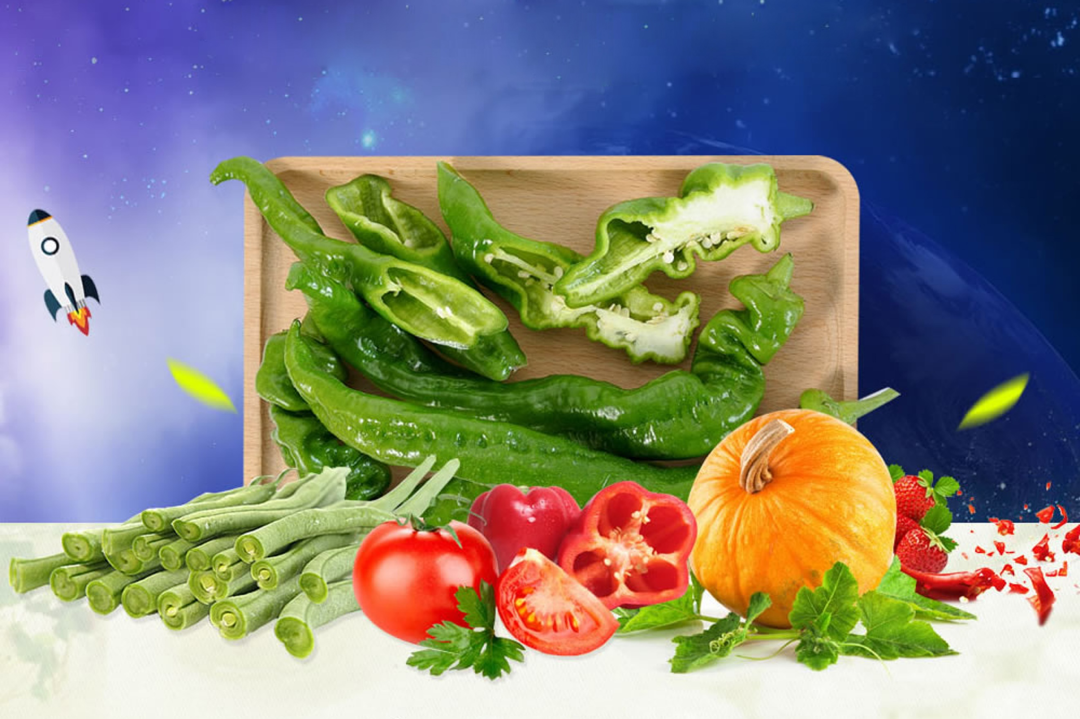
Author: Cheng Fangjie
Text review: Chen Yang
Scientific review: Chairman of Luo Bin Beijing Changjian Technology Co., Ltd., former Director of the Group Business Department of the China Aerospace Breeding Research Center
Yangkai Beijing Changjian Technology Co., Ltd. chief engineer, former China Aerospace Breeding Research Center Chief Engineer
Wang Tao Beijing Changjian Technology Co., Ltd. Deputy Chief Engineer, former China Aerospace Breeding Research Center Engineer
Quan Mingyang Beijing Forestry University Ph.D.
Lecturer of Wuhan Light Industry University of Xiongyin Huazhong Agricultural University
Reference source: "Aerospace Tour of the Sky", "Chinese Children's Children's Science Reading", "Chinese Children's Encyclopedia Magic Science", China Manned Aerospace official website, China Aerospace Technology Group Co., Ltd. Website, the official website of the Ministry of Agriculture and Rural Ministry of the People's Republic of China, the website of the Central Commission for Discipline Inspection, the website of People's Information
This article comes from: China Digital Science and Technology Museum
- END -
The annual incremental income of the science and technology board is expected to exceed 10 billion yuan. 8 securities firms want to grab the first batch of pilot qualifications

20JUNText | Zhou ShangzhengOn May 13th, the CSRC issued the Provisions on the Pilo...
Forest and grass Chinese medicinal materials industry development horn angle
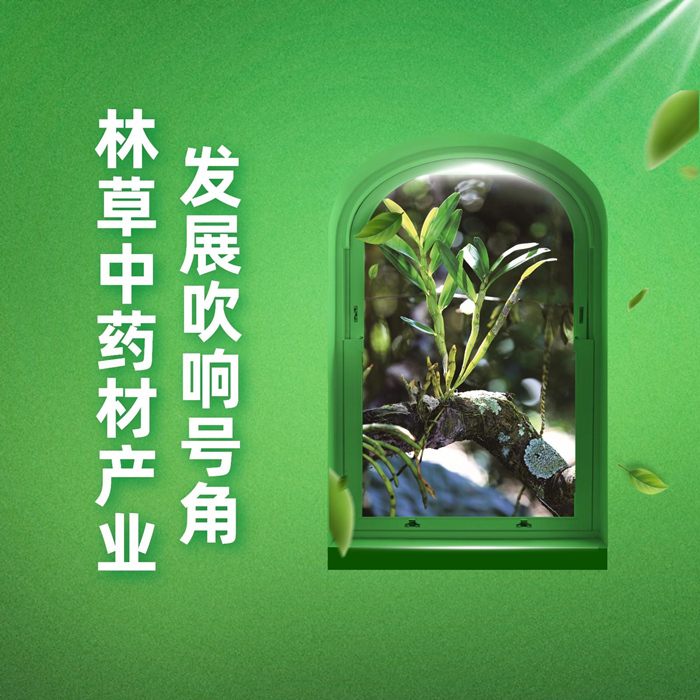
In May, it was a great time for the growth of Chinese medicinal materials. People ...